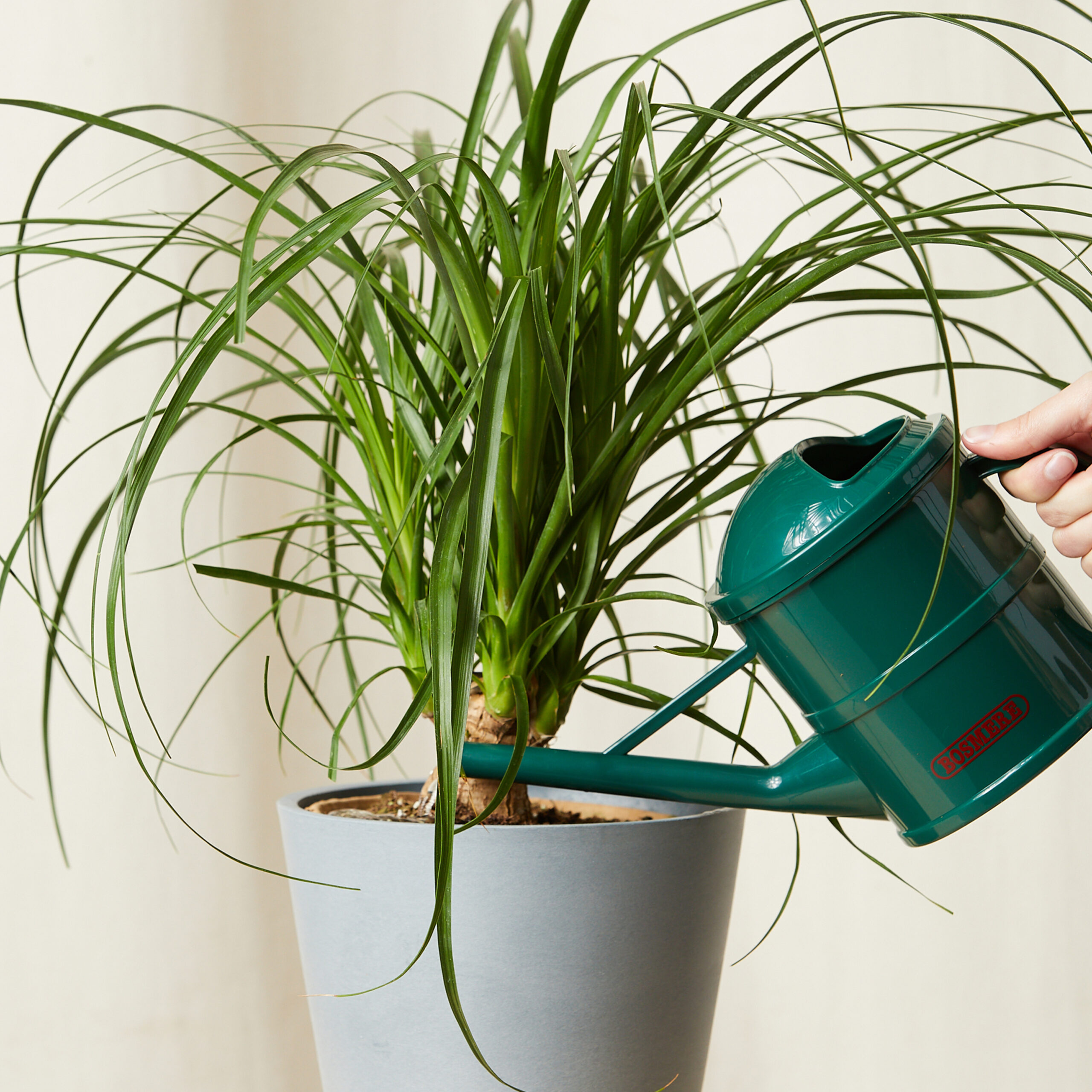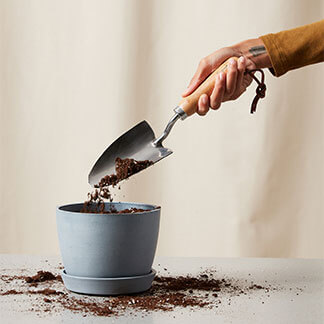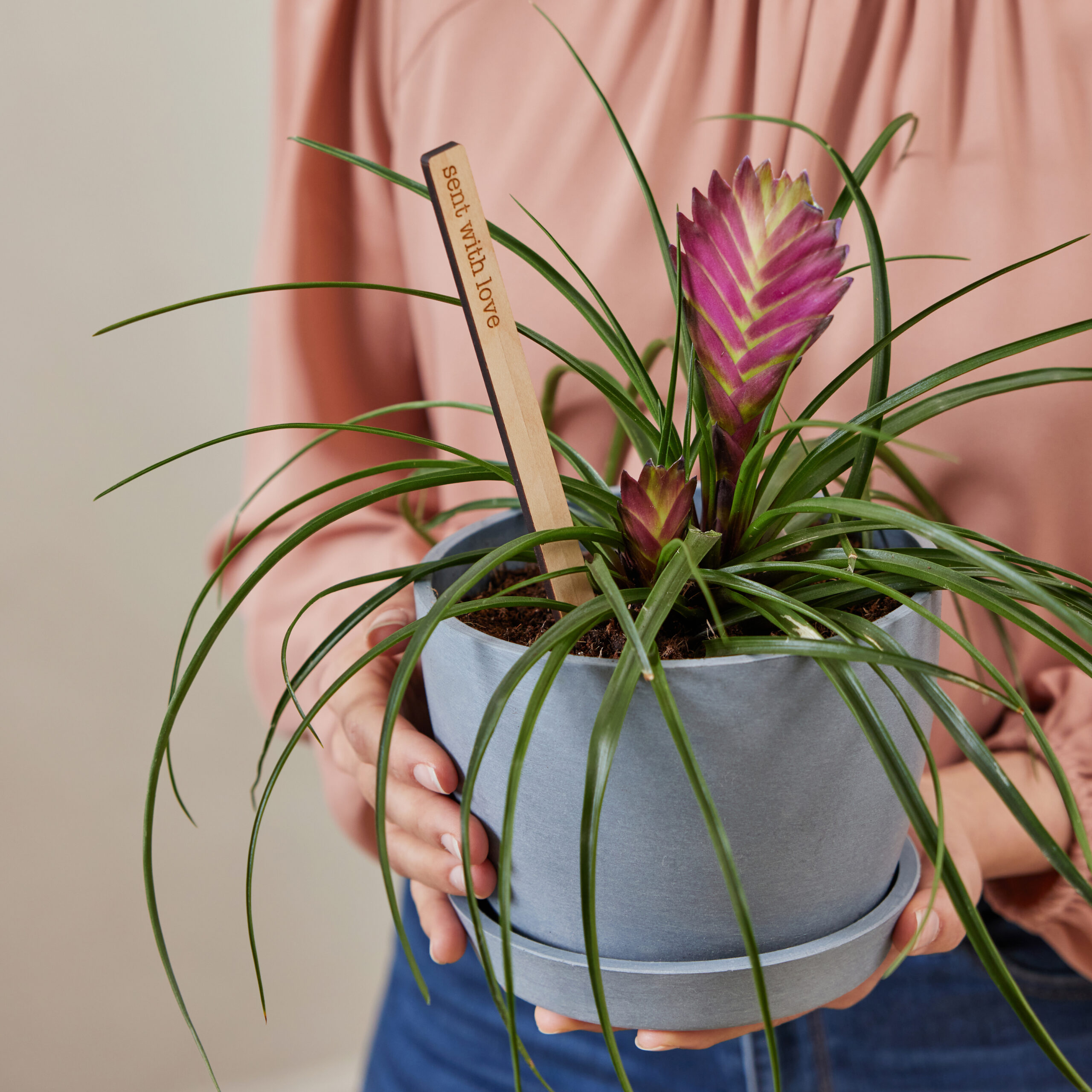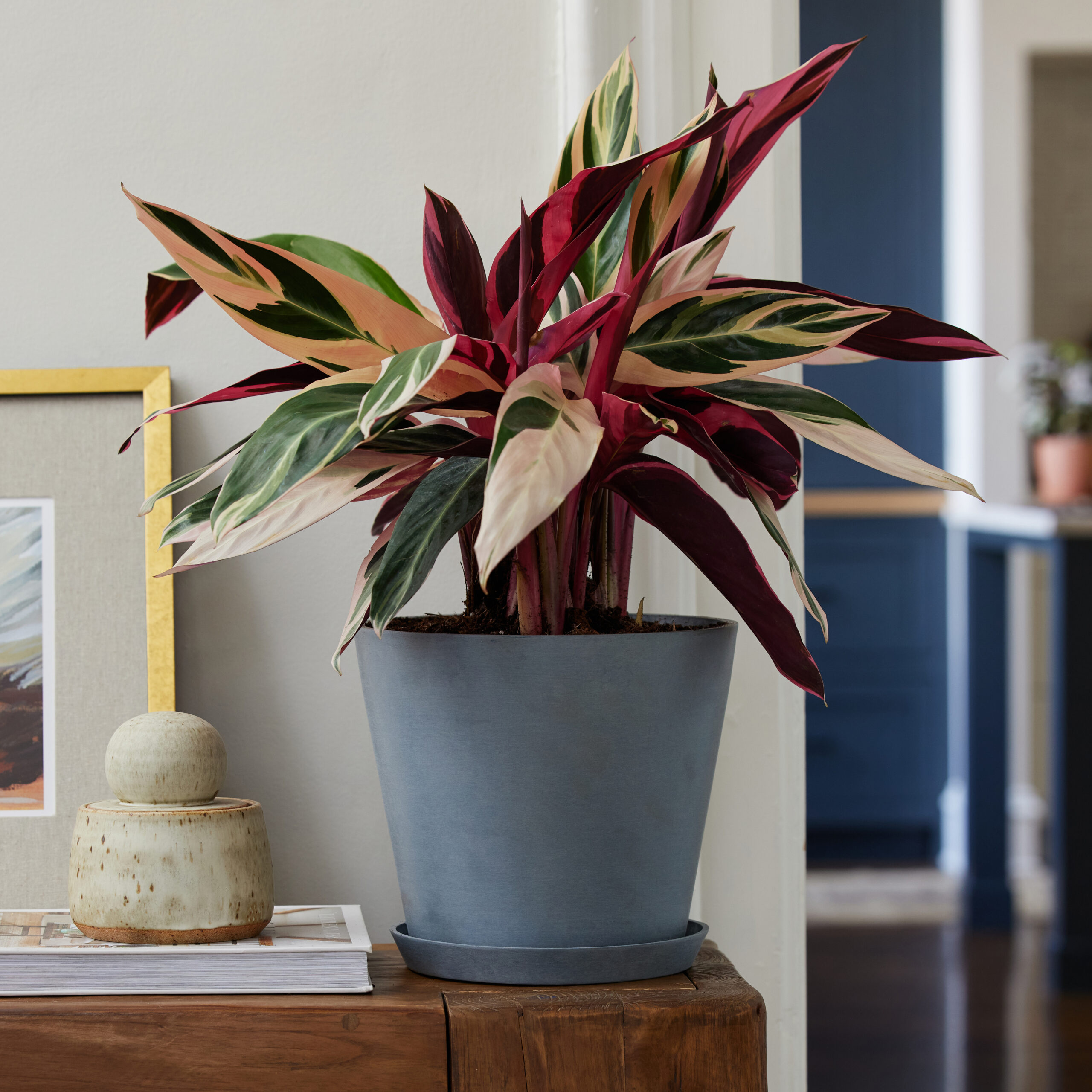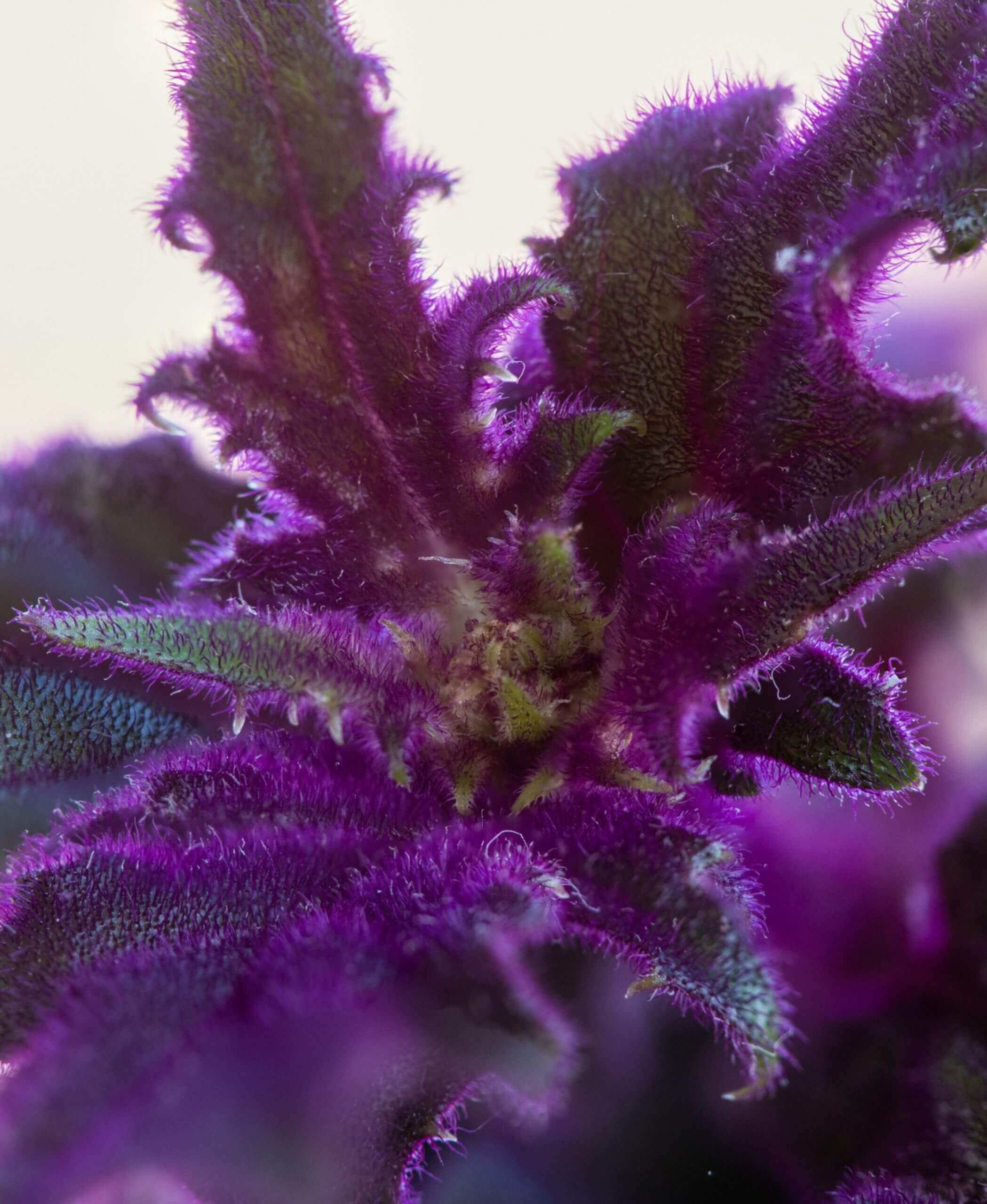Lack of light
The defining purple haze that emanates from this beautiful plant actually comes from very fine violet hairs covering the leaves. These hairs are sensitive and likely the cause of your plant’s grief. If your leaves look healthy but those purple hairs aren’t growing, your plant is probably lacking ample, natural light. Be sure to place your plant in a spot with bright indirect light to help it flourish and brighten up.
Too little water
Another issue that might be causing your plant’s color to dim, is a lack of water. If your plant’s leaves are turning brown or drying out, you are likely underwatering it.
Purple passion plants prefer moist (not soggy!) soil. Water fairly frequently, when 25% of the soil volume is dry. Always test the soil first and then water slowly and evenly until water begins to drip from the drainage hole. Empty the saucer of any excess water.
Old age
If your purple passion plant has sprouted its distinctive orange flowers, then it’s already reached maturity. In other words, it’s getting old—at least in plant years. At this stage, it is common for the plant’s vividness to begin to fade. Most purple passion plants reach maturity somewhere between three to five years.
Fortunately, you can “trick” your purple passion plant into living longer by getting rid of the flowers and buds as soon as they emerge, and keeping it in a constantly warm and bright location, with plenty of water.


